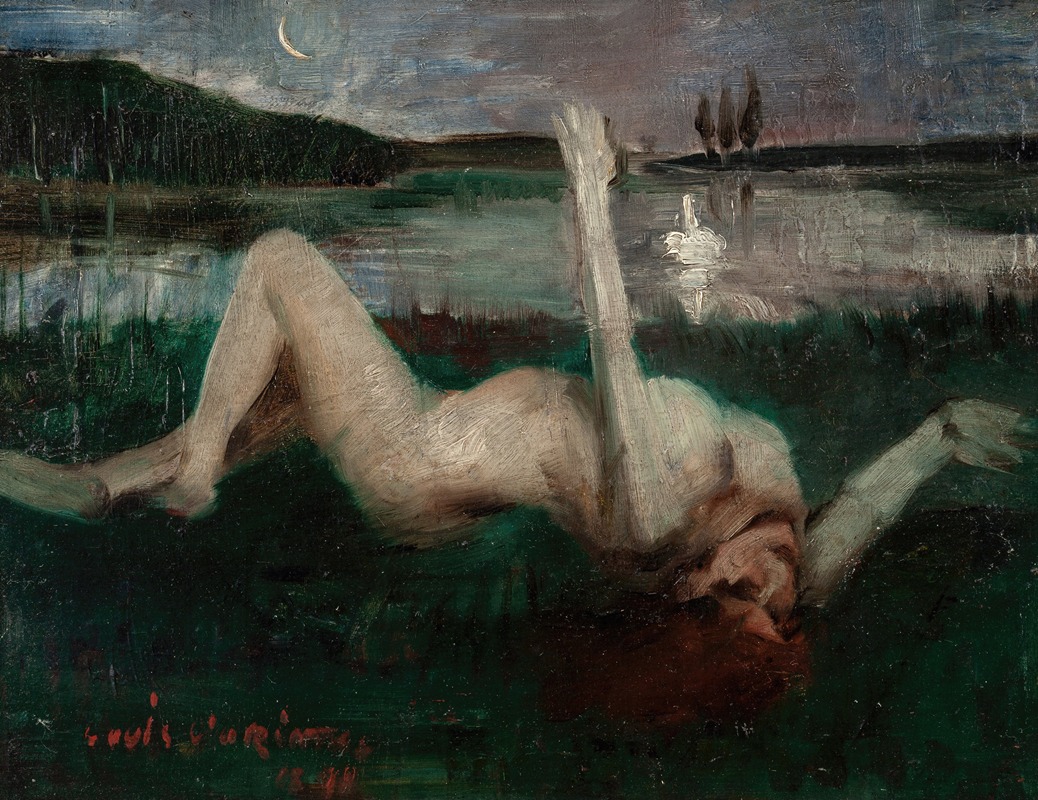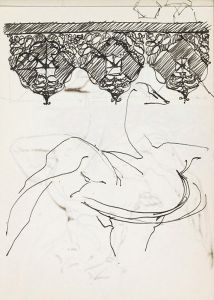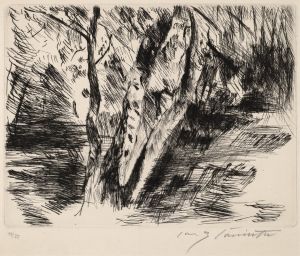
Leda
A hand-painted replica of Lovis Corinth’s masterpiece Leda, meticulously crafted by professional artists to capture the true essence of the original. Each piece is created with museum-quality canvas and rare mineral pigments, carefully painted by experienced artists with delicate brushstrokes and rich, layered colors to perfectly recreate the texture of the original artwork. Unlike machine-printed reproductions, this hand-painted version brings the painting to life, infused with the artist’s emotions and skill in every stroke. Whether for personal collection or home decoration, it instantly elevates the artistic atmosphere of any space.
Lovis Corinth was a German painter and printmaker whose work spans the transition from Impressionism to Expressionism. One of his notable works is "Leda," a painting that draws upon the classical myth of Leda and the Swan. This mythological theme has been a popular subject in art for centuries, inspiring numerous artists to explore its narrative and symbolism.
Corinth's "Leda" was created in 1923, during the later period of his career. By this time, Corinth had developed a distinctive style characterized by vigorous brushwork and a vibrant palette, which can be seen in this painting. The work reflects his mature phase, where he often combined elements of realism with expressive, emotional intensity.
The painting depicts the mythological story of Leda, a queen of Sparta, who was seduced by Zeus in the guise of a swan. This myth has been interpreted in various ways, often focusing on themes of seduction, transformation, and the interplay between the divine and the mortal. Corinth's interpretation of the myth is notable for its dynamic composition and the emotional depth he brings to the subject matter.
In "Leda," Corinth employs a rich color scheme and bold, expressive brushstrokes to convey the drama and sensuality of the encounter. The figures are rendered with a sense of movement and vitality, capturing the tension and allure of the mythological narrative. The swan, a central figure in the composition, is depicted with a sense of grace and power, emphasizing its dual role as both a symbol of beauty and a representation of Zeus's divine intervention.
Corinth's approach to the subject matter reflects his interest in exploring complex emotional states and the human condition. His portrayal of Leda is both intimate and grand, capturing the personal and mythic dimensions of the story. The painting is a testament to Corinth's ability to blend classical themes with modernist techniques, creating a work that is both timeless and innovative.
"Leda" is part of Corinth's broader body of work, which includes numerous portraits, landscapes, and historical scenes. Throughout his career, Corinth was known for his ability to infuse traditional subjects with a modern sensibility, making him a key figure in the development of German art in the early 20th century.
Today, Lovis Corinth's "Leda" is appreciated for its artistic merit and its contribution to the rich tradition of mythological painting. The work exemplifies Corinth's skill in combining narrative content with expressive form, resulting in a painting that continues to captivate viewers with its dynamic energy and emotional depth.

















